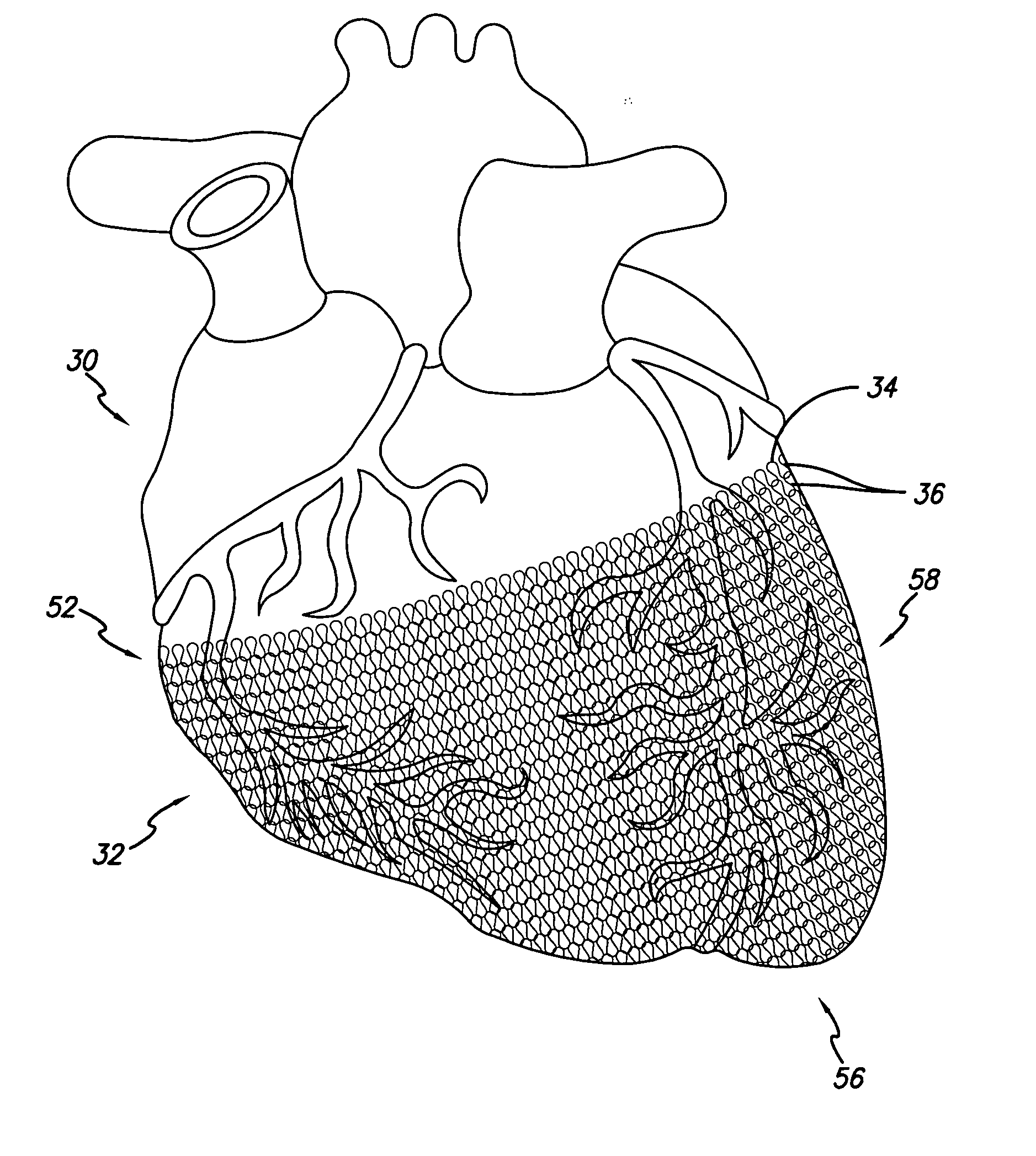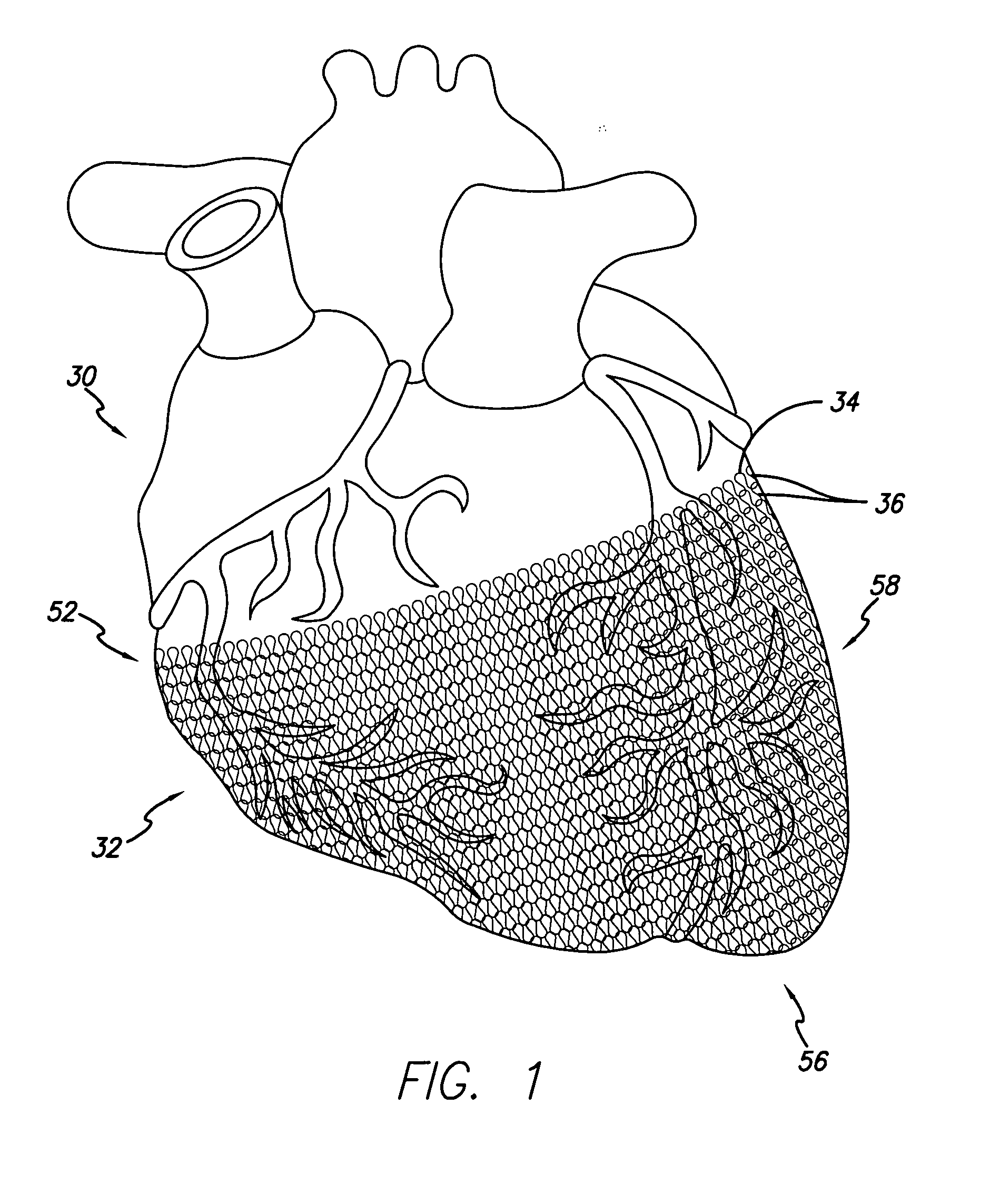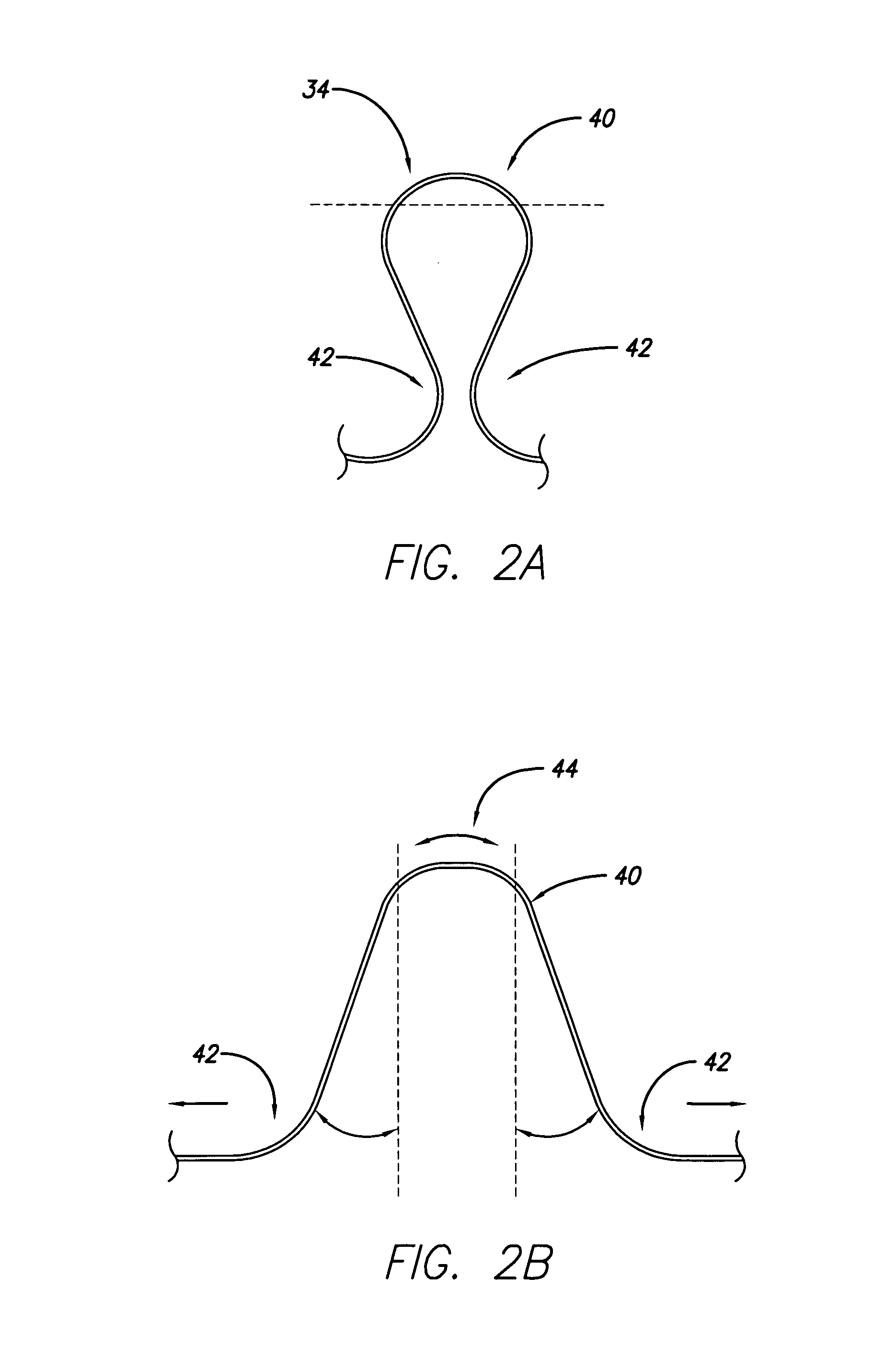Apparatus and method of delivering biomaterial to the heart
a biomaterial and applicator technology, applied in the field of applicator and heart treatment, can solve the problems of limited existence of the intrapericardial space as such, and achieve the effects of increasing tensile strength, reducing apparent viscosity, and reducing tensile strength
- Summary
- Abstract
- Description
- Claims
- Application Information
AI Technical Summary
Benefits of technology
Problems solved by technology
Method used
Image
Examples
Embodiment Construction
[0054] The present invention relates to a method and apparatus for treating heart failure. As discussed in Applicants' co-pending application entitled “Expandable Cardiac Harness For Treating Congestive Heart Failure,” U.S. Ser. No. 09 / 634,043, which was filed on Aug. 8, 2000, now U.S. Pat. No. 6,702,732, the entirety of which is hereby expressly incorporated by reference herein, it is anticipated that remodeling of a diseased heart can be resisted or even reversed by alleviating the wall stresses in such a heart. The present invention discloses embodiments and methods reducing cardiac wall tension.
[0055]FIG. 1 illustrates a mammalian heart 30 having a prior art cardiac wall stress reduction device in the form of a harness 32 applied to it. The cardiac harness 32 comprises a series of hinges or spring elements 34 that circumscribe the heart 30 and, collectively, apply a mild compressive force on the heart so as to alleviate wall stresses.
[0056] The term “cardiac harness” as used h...
PUM
 Login to View More
Login to View More Abstract
Description
Claims
Application Information
 Login to View More
Login to View More - R&D
- Intellectual Property
- Life Sciences
- Materials
- Tech Scout
- Unparalleled Data Quality
- Higher Quality Content
- 60% Fewer Hallucinations
Browse by: Latest US Patents, China's latest patents, Technical Efficacy Thesaurus, Application Domain, Technology Topic, Popular Technical Reports.
© 2025 PatSnap. All rights reserved.Legal|Privacy policy|Modern Slavery Act Transparency Statement|Sitemap|About US| Contact US: help@patsnap.com



